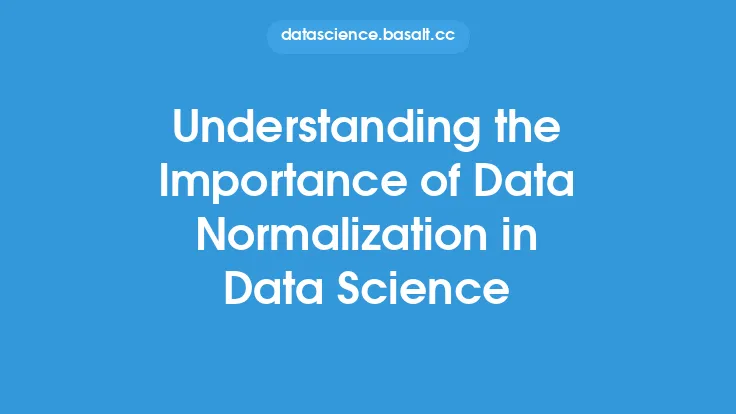Data completeness is a fundamental aspect of data quality in data science, referring to the extent to which a dataset contains all the required information. It is a critical factor in determining the reliability and accuracy of insights generated from the data. Incomplete data can lead to biased models, incorrect conclusions, and poor decision-making. Therefore, understanding the importance of data completeness is essential for data scientists, analysts, and organizations that rely on data-driven insights.
What is Data Completeness?
Data completeness is a measure of how much of the required data is present in a dataset. It is often expressed as a percentage, with higher percentages indicating more complete data. For example, a dataset with 90% completeness means that 90% of the required data is present, while 10% is missing. Data completeness can be affected by various factors, including data collection methods, data storage, and data processing. Incomplete data can arise from missing values, null values, or empty fields, which can occur due to errors, inconsistencies, or limitations in data collection.
The Consequences of Incomplete Data
Incomplete data can have severe consequences on data analysis and modeling. When data is missing, models may not capture the underlying relationships and patterns, leading to inaccurate predictions and conclusions. Incomplete data can also lead to biased models, where the model is trained on a subset of the data and fails to generalize to the entire population. Furthermore, incomplete data can result in incorrect conclusions, as the analysis may be based on a incomplete or inaccurate representation of the data. This can have significant consequences in business decision-making, where incorrect insights can lead to poor investments, ineffective marketing strategies, and decreased revenue.
The Benefits of Complete Data
Complete data, on the other hand, provides numerous benefits in data analysis and modeling. With complete data, models can capture the underlying relationships and patterns, leading to more accurate predictions and conclusions. Complete data also enables data scientists to identify trends, correlations, and anomalies, which can inform business decisions and drive growth. Additionally, complete data can improve the reliability and robustness of models, as they are trained on a comprehensive and accurate representation of the data. This can lead to better decision-making, increased efficiency, and improved outcomes.
Data Completeness in Different Data Types
Data completeness can vary across different data types, including structured, semi-structured, and unstructured data. Structured data, such as databases and spreadsheets, typically has higher completeness rates, as the data is organized and formatted in a consistent manner. Semi-structured data, such as XML and JSON files, may have lower completeness rates, as the data is less organized and more prone to errors. Unstructured data, such as text documents and images, can have the lowest completeness rates, as the data is often incomplete, inconsistent, or difficult to process.
Technical Aspects of Data Completeness
From a technical perspective, data completeness can be evaluated using various metrics and methods. One common approach is to use data quality metrics, such as data completeness ratio, data consistency ratio, and data accuracy ratio. These metrics can be calculated using statistical methods, such as mean, median, and standard deviation. Additionally, data completeness can be evaluated using data profiling techniques, such as data distribution analysis, data correlation analysis, and data dependency analysis. These techniques can help identify patterns, trends, and relationships in the data, which can inform data completeness evaluations.
Real-World Applications of Data Completeness
Data completeness has numerous real-world applications in various industries, including healthcare, finance, marketing, and customer service. In healthcare, complete data can inform diagnosis, treatment, and patient outcomes. In finance, complete data can inform investment decisions, risk management, and portfolio optimization. In marketing, complete data can inform customer segmentation, targeting, and personalization. In customer service, complete data can inform issue resolution, complaint handling, and customer satisfaction. In all these industries, data completeness is critical for making informed decisions, driving growth, and improving outcomes.
Conclusion
In conclusion, data completeness is a critical aspect of data quality in data science, with significant consequences for data analysis, modeling, and decision-making. Complete data provides numerous benefits, including improved accuracy, reliability, and robustness, while incomplete data can lead to biased models, incorrect conclusions, and poor decision-making. Understanding the importance of data completeness is essential for data scientists, analysts, and organizations that rely on data-driven insights. By evaluating data completeness using various metrics and methods, and addressing data completeness issues through data quality initiatives, organizations can unlock the full potential of their data and drive business success.





